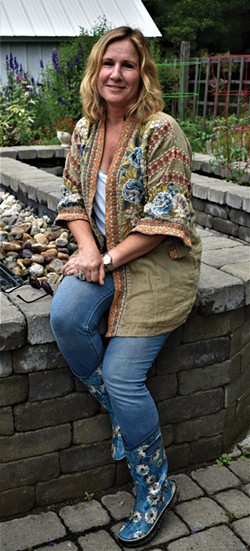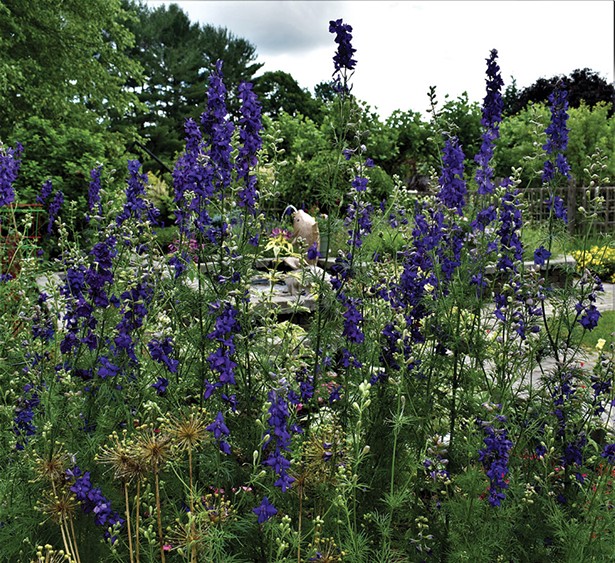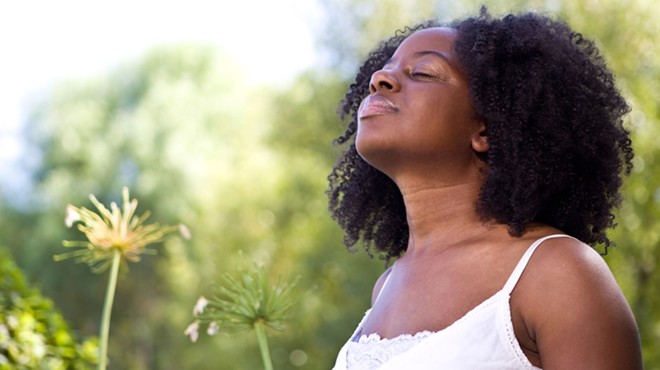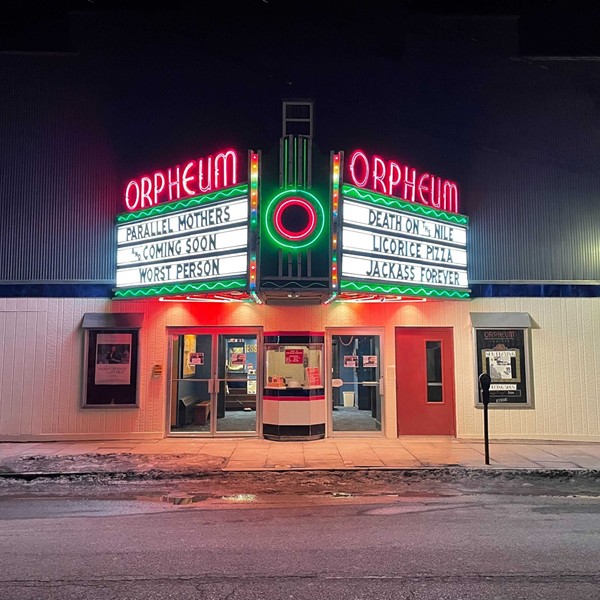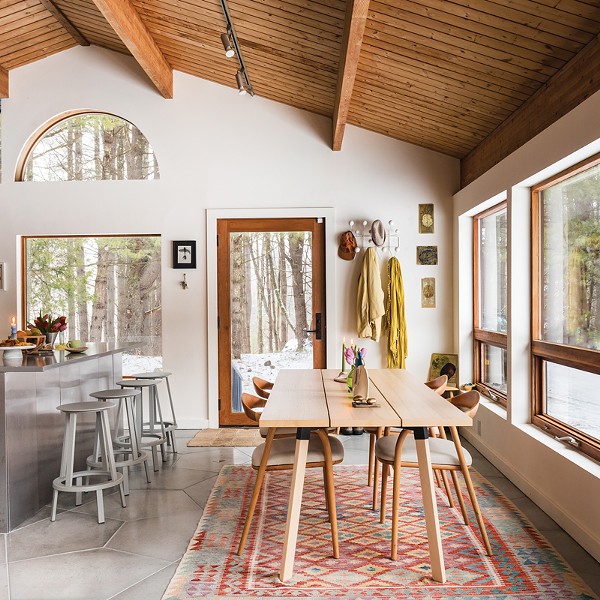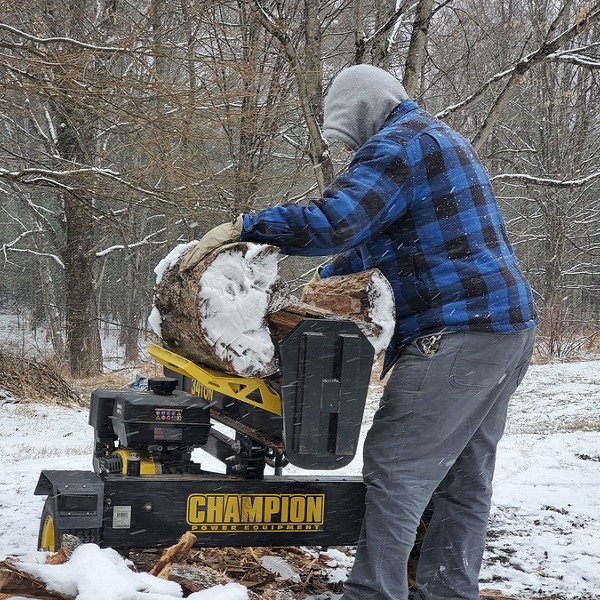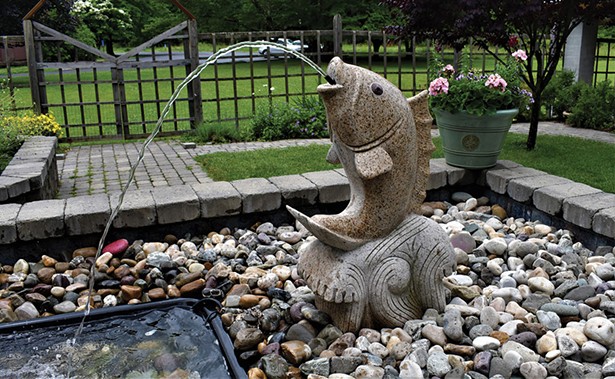
A horticulture therapist offers healing through plants at St. Gregory Episcopal Church’s new therapy garden in Woodstock.
People-Plant Connection
The healing power of the people-plant connection has been documented by research for four decades. It's fascinating to peruse the hundreds of compiled studies at the University of Washington's "Green Cities: Good Health" website. Those studies demonstrate that we humans experience therapeutic benefit both mentally and physiologically from plants—from passive exposure to their beauty and from interacting with them in countless ways.In recognition of those scientifically proven benefits, the lovely Horticultural Therapy Garden (HTG) at St. Gregory's Episcopal Church of Woodstock was designed to provide access and interaction for people of all ages and abilities. Horticultural Therapist Mariann Durkin and church members like Jim Dinsmore, Jesse Jones, Harry Kirn, and Margo McCloon planned and nurtured the vision for the garden for several years before breaking ground in 2004.
The HTG was sited alongside a sanctuary/memorial garden and not far from a stunning stone labyrinth—all of which are open to the public, dawn to dusk, and located behind the church. The gardens are one of St. Gregory's ways of serving the greater community, and they are nurtured by Garden Committee members Marie Duane, Elizabeth Barlow, and Karuna Foudriat.
The HTG grew slowly as resources permitted and is now a unique resource in the Hudson Valley, as the closest therapy gardens to St. Gregory's are in Westchester and in Ballston Spa.
Mariann Durkin has been invested in the vision throughout. She has been a self-employed landscape horticulturist for 25 years, and in the early 2000s, she earned her horticultural therapy degree from the New York Botanical Garden. She fulfilled her 300 in-service hours at the Center for Discovery in Harris, New York and the Unlimited Garden in Ballston Spa.
Access and Adaptation
A professional member of the American Horticultural Therapy Association, Durkin has been leading sessions for groups at the St. Gregory's HTG for four years. The same classes of young people from the Anderson Center for Autism have been coming year after year. "It's been a joy to really get to know these kids," she says. She has also led sessions for seniors and teenagers with behavioral challenges, and is working with the ARC of Ulster County. The HTG garden shed contains adaptive tools, and buckets and watering cans of all sizes.
"The idea of a horticultural therapy garden is that it's adaptive to all ages and abilities," Durkin says. "Everything here is handicapped accessible. The pathways are wide and most of the garden beds are raised. If someone is in a wheelchair, they can reach the beds with a hose. There's also beds at ground level for those who are agile enough. The whole premise of horticultural therapy is that you adapt to the population that you're serving."
One of those adaptations is Durkin noting who needs/would like to do fine motor movements (deadheading, weeding, flower arranging) and who needs gross motor movement (wheelbarrowing mulch) on a given day—the needs can vary from visit to visit. "Recently, I could tell one young man needed gross motor movement to release some pent-up energy, so I encouraged him to mow the garden's small grassy patch with the reel (non-motorized) mower. He was pleased, I was pleased, and he left the session on a high note. That's the goal—leaving on a high note, feeling a sense of accomplishment and greater self-esteem."
It doesn't matter if the lawn gets mowed just-so. "Like many things in life, it's never about the outcome here—it's really about process," Durkin says. "We break activities down into as many steps and phases as needed, depending on the population." Although the garden display is colorful and enticing, the display is secondary to the engagement with the process—a perfectly manicured garden has never been the goal.
Gathering Place
Groups come from May until late October or early November, and they make heavy use of the pavilion within the garden. It's where the groups circle up with Durkin when they first arrive to find out the plan for the session (usually, an hour). It's also where creative activities are undertaken with gusto.The pavilion is where participants paint rocks to leave behind in the garden. ("That gives them a feeling of investment and pride, when they see their art works in the garden," Durkin says). The pavilion is also where groups press flowers; make herb and garlic-infused vinegars; assemble seed packets; arrange flowers; make pesto from basil and garlic grown in the garden; design flower mandalas; make potpourri; practice plant ID using all the senses; and fashion seed balls.
"We make 'seed balls' with clay, peat, water, and wildflower seeds," Durkin says. "Then we toss them into the field, and as the rain comes, the balls break apart and release the seeds. It's a fun, messy, successful activity." Anything that has to do with seed saving is key, as seeds offer a fascinating window into the life cycle of plants.
"For a lot of people these are completely new activities," Durkin says. "I've had groups who've never seen a worm up close or held one in their hand. When the butterfly bushes were blooming last year, they were just covered in butterflies and one fellow couldn't get over being that close to all these butterflies. It was really a moment for him, and was very moving."
The Next Phase
Durkin envisions the garden adding square footage so participants can grow herb and vegetable crops for sale at local markets. "We could supply vegetables to church luncheons, and flowers for local events. This is my dream, for this healing place to be used more," she says. She also wants to see more senior groups come, and thinks the pavilion would be ideal for bereavement circles.
"When things are difficult in my life, I'm always looking to get back to something basic," Durkin says. "It doesn't get more basic than nature and gardening. I soak up the level of joy that's cultivated in the groups that come here. They are engaged and happy; joy is imparted and exchanged."
In the center of the garden is a soothing, gurgling fountain shaped like a koi fish. "The kids love the sound of the water and that the fountain's running, as it took a while to get it working properly and safely. Last year we had a big party with cake when it was finally running—it was a very exciting moment for us here." Here's to more such victories in the Horticultural Therapy Garden at St. Gregory's.
Visit St. Gregory's website to learn more about the Horticultural Therapy Garden or contact Mariann Durkin directly at [email protected]. And go visit!
Plants for Horticultural Therapy:
Plants that are fragrant, colorful, soft, edible
Plants that attract butterflies
Plants with flowers that dry and press well and that rebloom
Plants with seed that's easy to collect
Trees for shade
Plants that need to be maintained (i.e., all plants)







